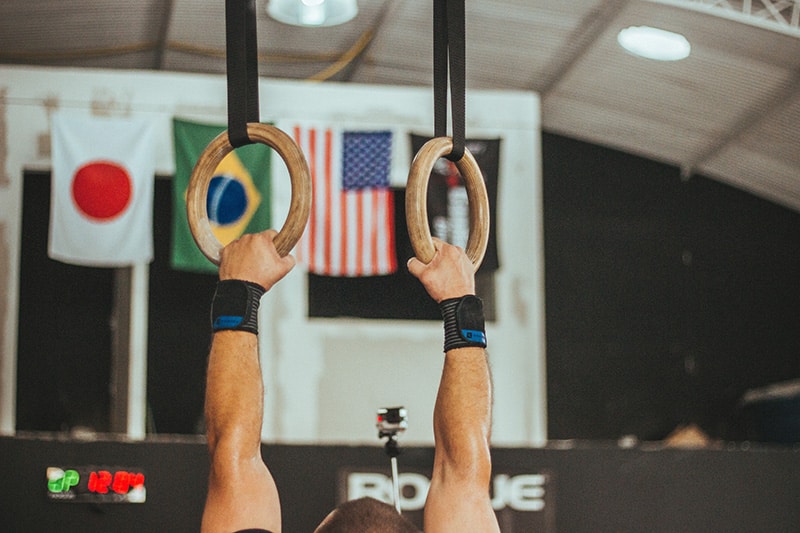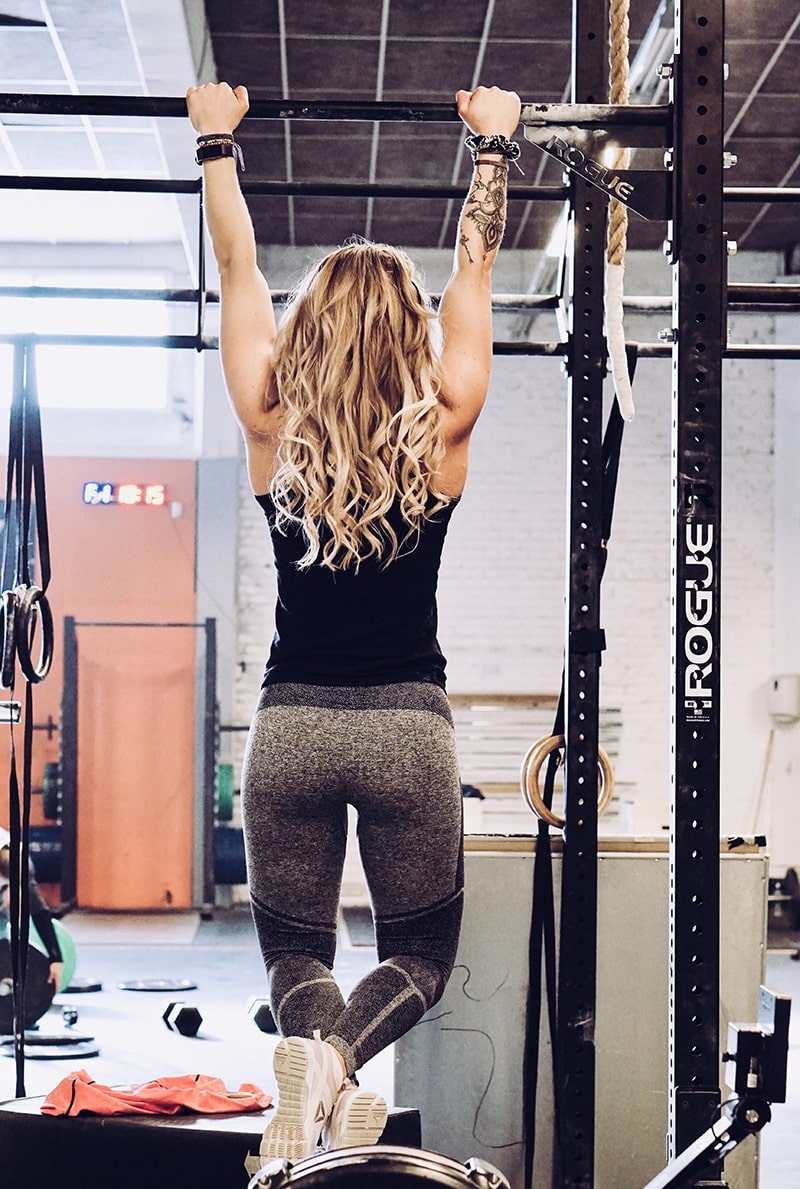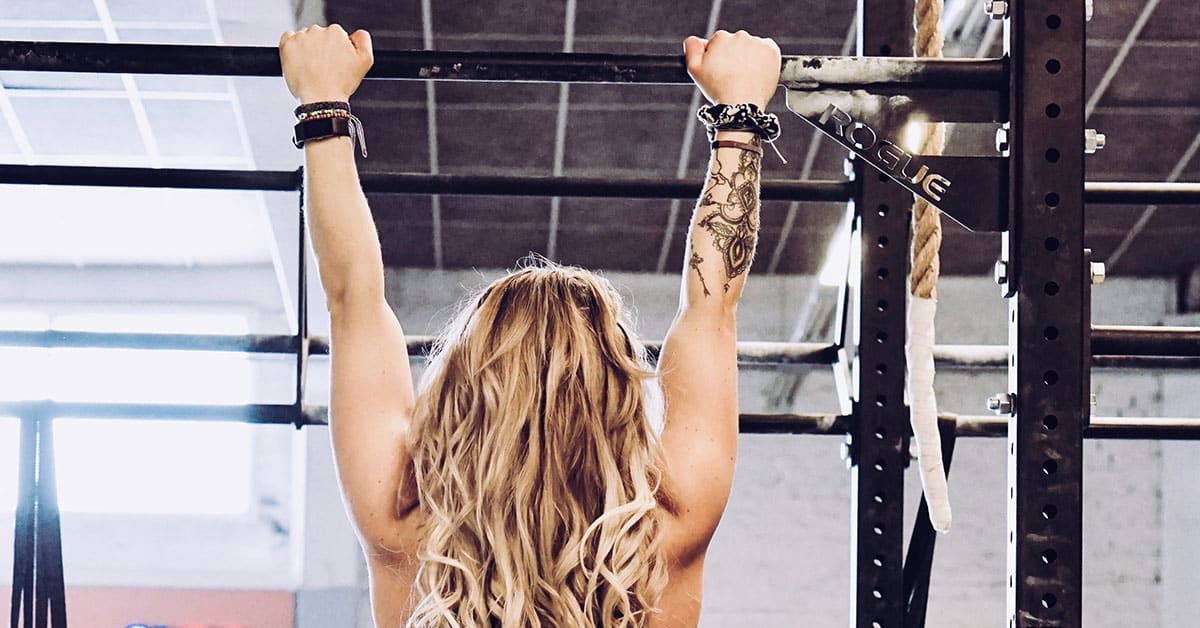Dead Hang Workouts – Nine Ways to Improve your Grip, Arm and Shoulder Strength
Dead Hang workouts are a great way to build grip and upper body strength, enhance and repair your shoulders and improve mental fortitude.
Benefits of the Dead Hang
Improved grip strength and endurance
If you’re looking for an exercise to build a grip like a vice, look no further than hanging. When you hang from a bar or other object, the muscles involved with your grip have to hold the entirety of your body weight.
What is the Best Rogue Dip Station?
If you haven’t hung from a bar in a while, you’ll notice your forearms start to burn with lactic acid in about 10 seconds. The grip strength you develop from hanging can carry over to other grip-dependent movements like the deadlift.
Improved shoulder health and mobility
Hanging from a bar is an easy way to let your shoulders experience their full range of motion. What’s more, the passive stretch it provides can really help loosen and open things up. You can up the mobility benefits of the hang by alternating between passive and active hangs and incorporating some swings.
Shoulder injury repair
Lots of people are dealing with shoulder pain from shoulder impingement, rotator cuff injury, or frozen shoulder. Dead Hangs are a great way to naturally work on these problems.
SHOP the best bar for Dead Hangs
Dead Hang Workouts can lead to Posture correction
The stretch that you get in your shoulders, lats, and back can help alleviate the Quasimodo hunchback that develops from sitting slouched over a computer all day.
How to Dead Hang
- Pronated grip is the most common
- If you’re going for max time then a standard pullup grip will probably be most comfortable
- Hands a little wider than shoulder width apart
- Hang loose. Keep your grip tight and relax the rest of your body
Types of Dead Hang
Passive Dead Hang
Take an overhand grip on the bar and hang with your feet off the ground. Allow your shoulder and lat muscles to relax. Your body should sink, and your shoulders should be touching your ears. Just hang there and let the weight of your body passively stretch your shoulders, lats, and back.
Active Dead Hang
Start in a passive hang. Now retract your shoulder blades together. This will bring your shoulders down and away from your ears. Stop retracting when your ears reach your elbows. Hold for as long as you can.
Active hanging works the muscles in your shoulders and back. Also, because you’re not allowing all your weight to pull down on your tendons and ligaments, it’s counterintuitively actually easier on the shoulders than a passive hang.
If you have pain in your shoulder(s) during a passive hang, try an active hang first and slowly work your way to a passive hang.
Supinated Dead Hang
Changing your grip tests your body in many new ways and will help to uncover any weaknesses you may have.
Dead Hang Workouts
WORKOUT 1
For Time
- 6 minute Dead Hang(cumulative)
Each time you drop from the bar, perform:
- 800 metre Run
- 30 Push-Ups
With a running clock, athlete starts the workout by free-hanging by the hands only from a pull-up bar. If athlete drops from the pull-up bar before 6 minutes, take note of the time but do not stop the clock. Once the run and push-ups are complete, resume the hang hold. Repeat until cumulative Dead Hang time reaches 6 minutes. Score is the total time, including the time it takes to do all runs and push-ups.
WORKOUT 2
3 Rounds for Time
- 32 Deadlifts (185/135 lb)
- 32 second Dead Hang
- 800 metre Running Farmer Carry (15 lb dumbbells)
WORKOUT 3
For Time
- 6 minute Hang Hold
Each time you drop from the bar, perform:
1st Drop:
- 800 metre Run
- 20 Burpee Box Jumps (24/20 in)
2nd Drop:
- 600 metre Run
- 20 Burpee Box Jumps (24/20 in)
3rd Drop:
- 400 metre Run
- 20 Burpee Box Jumps (24/20 in)
4th and subsequent Drops:
- 200 metre Run
- 20 Burpee Box Jumps (24/20 in)
With a running clock, hang from a pull-up bar with your feet completely off the ground until you accumulate 6 total minutes hanging. If you drop from the bar, perform the required run and burpee box jumps, then return to the Dead Hang position. The clock does not stop. Keep track of cumulative hold time.
Score is the time on the clock when the accumulated 6 minute Dead Hang is completed.

WORKOUT 4
For Time
- 2 minute Hang Hold
- 100 Double-Unders
- 40 V-Ups
- 30 Cleans (80% max)
- 40 V-Ups
- 30 Cleans (80% max)
- 100 Double-Unders
- 2 minute Hang Hold
With a running clock, as fast as possible perform the prescribed work in the order written. This workout, as originally written, called for “heavy cleans” but did not specify an Rx weight. WODwell set Rx at 80% of the athlete’s 1-rep max clean. Scale as needed.
Score is the time on the clock when the last 2 minute Dead Hang is completed.
WORKOUT 5
For Time
- 800 metre Kettlebell Run (45/35 lb)
- 50 Box Jumps (24/20 in)
- 50 Wall Ball Shots (20/14 lb)
- 1 minute Hang Hold
- 50 Kettlebell Swings (45/35 lb)
- 50 Ball Slams (20/14 lb)
- 200 metre Farmer’s Carry (2×45/25 lb)
- 1 minute Hang Hold
- 50 Push Presses (95/65 lb)
- 50 Hand Release Push-Ups
- 50 Jumping Pull-Ups
- 50 Tire Flips (230/160 lb)
- 200 metre Farmer’s Carry (2×45/35 lb)
- 1 minute Hang Hold
- 50 Burpees
Cash-Out:
- 800 metre Kettlebell Run (45/35 lb)
- 75 second Hang Hold*
*Penalty for breaking during the 75-second hang hold: perform 75 burpees
For the 1-minute hang holds, athlete may accumulate 1 minute total (break if necessary, but only count time while hanging). However, for the 75-second hang hold, a 75-burpee penalty is assessed for breaking the hold. Only one penalty will be assessed, even if the athlete breaks multiple times. For the burpee penalty, perform the burpees after completing the cumulative 75-second Dead Hang to finish the workout.
Scaling
Perform the same workout with a partner in a “you go, I go” format, where one partner works at a time while the other rests. Except on the run: partners perform the kettlebell run together (one partner holds the kettlebell at a time).
PARTNER WORKOUT 6
8 Rounds for Time (with a Partner)
- 4 Box Jumps (each) (34/28 in, switch every rep)
- 18 Deadlifts (245/170 lb) / Hang Hold*
- 7 Synchronized Bar Facing Burpees
- 36 Wall Ball Shots (20/14 lb, switch every 6 reps)
*While one athlete performs the Deadlift, the other athletes will hang from the Pull-Up Bar. Switch as necessary.
Time Cap: 40 minutes
With a running clock, as fast as possible perform the prescribed work in the order written for 8 rounds. For every round, both athletes must complete 4 Box Jumps switching after every rep, then Partner A will do 18 Deadlifts while Partner B will hang from the Pull-Up Bar. They can switch as necessary. Then athletes must complete 7 Synchronized Bar Facing Burpees. Finally, perform 36 Wall Ball Shots, switching every 6 repetitions.
Note that the total number of repetitions for the Box Jumps is 8 (4 each). For each of the other movements, the total number of repetitions is as written: 18, 7, 36 (partners divide the work).
Score is the time on the clock when the last round of the Wall Ball Shots is completed, or when the 40 minute time cap is met.

Dead Hang Workouts – Tips and Strategy
This WOD is designed to keep you moving for a long period of time. Keep a consistent pace on this workout and keep the transitions between exercises short. Try to exploit each other’s strong points and divide the Deadlifts as necessary. Go unbroken on the Wall Ball Shots.
Scaling Options
Intermediate
8 Rounds for Time
- 4 Box Jumps (30/24 in, switch every rep)
- 18 Deadlifts (187/132 lb) / Hang Hold*
- 7 Synchronized Bar Facing Burpees
- 36 Wall Ball Shots (20/14 lb, switch every 6 reps)
Beginner
8 Rounds for Time
- 4 Box Jumps (24/20 in, switch every rep)
- 18 Deadlifts (132/95 lb) / Hang Hold*
- 7 Synchronized Burpees
- 36 Wall Ball Shots (14/7 lb, switch every 6 reps)
Want to build a six pack and stronger core?
PARTNER WORKOUT 7
EMOM (with a Partner) for 20 minutes
- 5 Thrusters (95/65 lb)
- 5 Burpees
- While partner hangs from Pull-Up Bar
This is an every minute on the minute (EMOM) workout where Partner A has one minute to finish the reps. Whatever time is left in the minute is rest time. While Partner A completes the reps, Partner B is hanging from a pull-up bar.
PARTNER WORKOUT 8
AMRAP (with a Partner) in 20 minutes
Buy-in: 5 Rounds (each)
- Partner A: 20/15 calorie Row
- Partner B: 20 GHD Sit-Ups
* Switch after both partners finish
In the remaining time, AMRAP of:
- Partner A: Bench Presses (155/105)
- Partner B: Dead Hangfrom a Pull-Up Bar
* Switch as needed
One partner starts on the rower, the other starts on GHD. Switch when both partners’ reps are completed. After each partner completes 5 rounds, complete the max reps bench press in the remaining time (one partner working at a time, while the other does a hang hold); switch as needed.
Learn how to develop stronger shoulders
PARTNER WORKOUT 9
For Time (with a Partner)
- 800 metre Farmer Carry (24/16kg)
- 100 Air Squats / Plank Hold
- 90 Pull-Ups / Superman Hold
- 80 Sit-Ups / Wall Sit Hold
- 70 Burpees / Hang Hold
- 60 Hand-Release Push-Ups / Handstand Hold
- 50 Buddy Deadlifts (100/70 kg)
- 400 metre Farmer Carry (24/16 kg)
To start, partners do the farmer carry together (each athlete carries two kettlebells, one in each hand). For the next five movements one partner works while the other partner ‘holds.’ If one partner takes a break, partners switch positions then continue.
The buddy deadlifts are performed with a single bar, both partners lifting it together.
Dead Hang FAQs
More questions? Check out out Dead Hang Workouts FAQs
What do Dead Hangs Do?
The dead hang primarily works your upper body. It’s a great stretching exercise for your back, arms, shoulders and abdominal muscles, made possible with the opposite forces of your palms’ grip on the bar and the gravitational pull of the rest of the body.
How Long should I Dead Hang?
Don’t bend your arms and stay relaxed. Hang for 10 seconds if you’re new to the exercise. Work your way up to 45 seconds to 1 minute at a time.
Do Dead Hangs Build Muscle?
Dead Hangs build endurance, resistance to fatigue and grip, arm, shoulder and back strength. They can be added into hypertrophy programs but are not a muscle building exercise in their own right.
Is a 2 Minute Dead Hang Good?
Yes, a 2 minute Dead Hang is good. The dead hang is used as a good introduction to calisthenics / bar training and for developing foundation body strength. It’s also recommended as part of the progression exercises for pull-ups.
Do Dead Hangs Build Forearms?
An often overlooked benefit of dead hangs is that along with building mammoth grip strength, they also blow up your forearms. You’ll realise once you give these a go – doing 4 sets of dead hangs per week will blast your forearms 10x as hard as 10 sets of mindless forearm curls with 15kg barbells.
Do Dead Hangs Fix Posture?
Prolonged sitting is one the major culprits as it hunches the shoulders and compresses the spine. The dead hang can help us drastically improve our posture. … Allowing gravity to pull the spine back into its natural position feels great and it will also improve posture.
Does Hanging improve Grip Strength?
Yes. When you hang from a bar or other object, the muscles involved with your grip have to hold the entirety of your body weight. The grip strength you develop from hanging can carry over to other grip-dependent movements like the deadlift.
If you enjoyed these Dead Hang Workouts, try these lunge, chest or Russian Twist workouts.





Comments are closed.